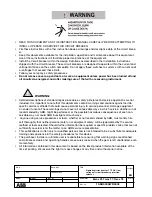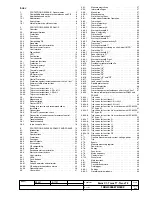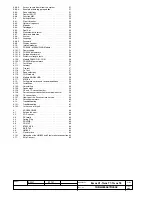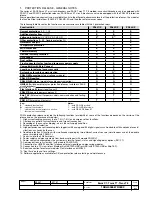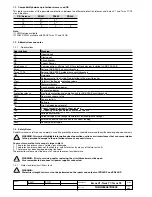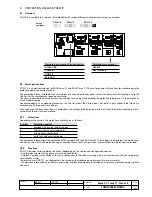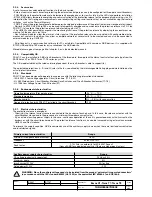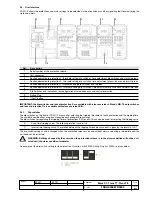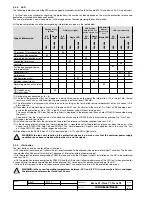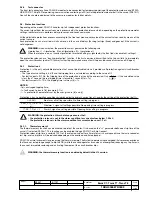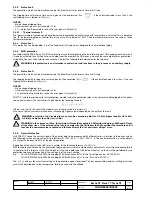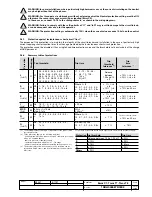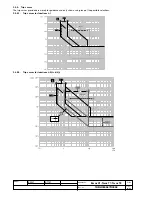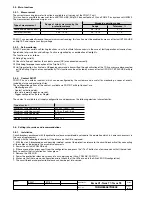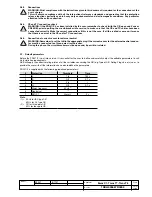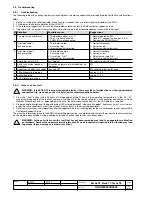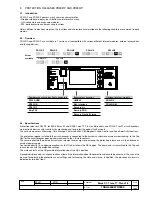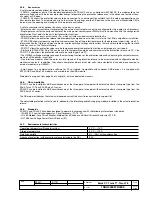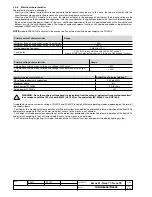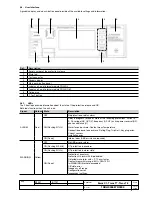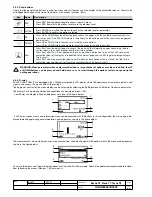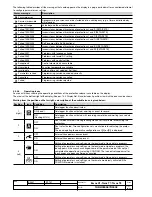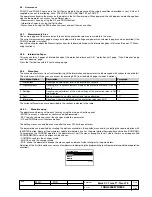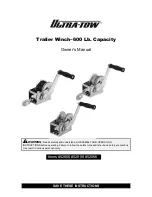
B0431
Emax X1-Tmax T7-Tmax T8
12/66
Doc. no.
Model
Apparatus
Scale
Page No
1SDH000587R0002
2.4.2. Protection S
The protection, which can be disabled, can be the fixed time (t=k) or inverse time (t=k/I
2
) type.
The tripping time with inverse time curve is given by the expression: t(s)=
. If the calculated value is less than t
2
, the
real tripping time is forced to t
2
(t(s)= t
2
.)
NOTES:
- t(s)= envisaged tripping time;
- I
f
= fault current; given in [In] (example: 1.7In)
- I
2
, t
2
= protection S parameters set by the user, given in [In] and [s]
2.4.2.1. Thermal memory S
The thermal memory function can be enabled for cable protection when the curve with inverse time is selected. This is based on
the “tS” parameter defined as the trip time of the curve (t2) selected at 1.5xI2. The other characteristics are the same as those
for thermal memory “L”.
2.4.3. Protection I
This protection can be disabled; it is of the fixed time (t=k) type, and is designed for a nil intentional delay.
2.4.4. MCR protection
Available with the SACE Emax X1 CB, this protection is useful for protecting the installation against CB closing upon short-circuit.
It remains activated for a limited time, calculated from the moment the CB closes, and uses the same algorithm as protection I.
Using Ekip Connect, the customer can activate it, adjust the tripping threshold and enter the trip time.
WARNING: this protection is an alternative to protection I and functions in the presence of an auxiliary supply.
2.4.5. Protection G
The protection, which can be disabled, can be the fixed time (t=k) or inverse time (t=k/I
2
) type.
The tripping time with inverse time curve is given by the expression: t(s)=
; If the calculated value is less than t
4
, the real
tripping time is forced to t
4
(t(s)= t
4
).
NOTES:
- t(s)= envisaged tripping time;
- I
f
= fault current; given in [In] (example: 3.7In)
- I
4
, t
4
= protection G parameters set by the user, given in [In] and [s]
PR331/P is able to provide earth fault protection, created inside the protection release, by vectorally adding together the phase
and neutral currents. The fault current is defined by the following formula:
If there is no fault in the circuit, the modulo-sum of these currents is always nil.
Vice versa, the fault current will acquire an increasingly higher value, depending on the entity of the fault.
WARNING: protection G is disabled for current values exceeding 8In (for I
4
≥
0,8In), higher than 6In (for 0,5In
≤
I
4
<0,8In) and higher than 4In (for I
4
<0,5In)
WARNING: in the absence of Vaux, the minimum threshold accepted is 0.25In with rating plug= 400A and 0.2In for
all the other sizes. If the entered value fails to comply with this limitation, the SW overrides the threshold until it
reaches the minimum value accepted and the leds display the “Inconsistent settings” error.
2.4.6. Neutral Protection
Unit PR331/P allows the current signal of the neutral pole to be processed with different ratios in relation to the phase values.
The following values can be set for this protection: I
n
N =Off - 50% - 100% - 200% * I
n
. The neutral protection is set by default
at a current value equal to 50% of the phase regulation.
Regulation of the neutral value (InN) must conform to the following formula: (I
1
x I
n
N)
≤
Iu.
With four-pole circuit-breakers, the protection release performs the test automatically and transmits a fault signal following failure
to conform to this formula. If the circuit-breaker is the three-pole type with external neutral, no tests will be performed by the
protection release and correction of the settings is at the user’s charge.
E.g.
With CB E1B800 (Iu=800A), Rating plug 400A (In=400A) and I1=1In, the I
n
N setting can be: 50-100-200%.
With CB E1B800 (Iu=800A), Rating plug 800A (In=800A) and I1=1In, the I
n
N can be: 50-100%.
The I
1
=1I
n
setting is the maximum setting of the protection against overload. The real permissible maximum setting must take
account of derating due to the temperature, terminals used and the altitude.
B1751


